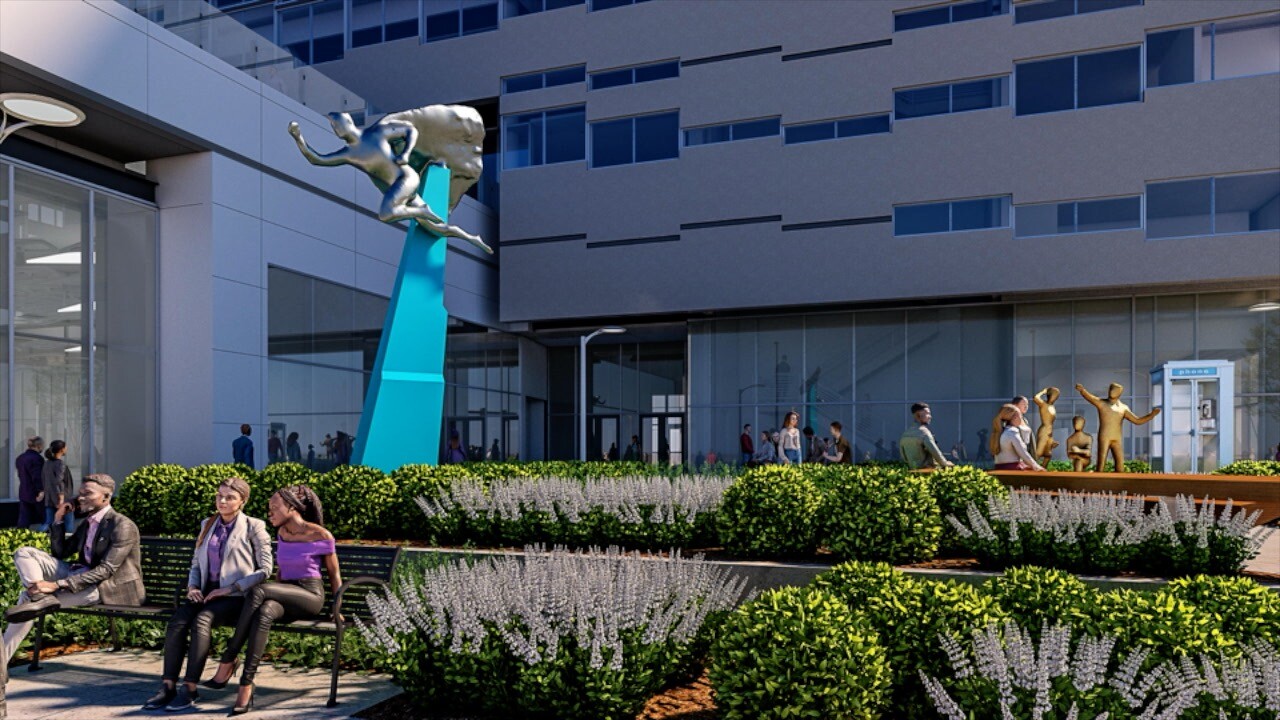CLEVELAND, Ohio — He was said to be faster than a speeding bullet, more powerful than a locomotive and able to leap tall buildings in a single bound. But seldom does Superman’s resume include his Cleveland roots.
A nonprofit is aiming to launch the original superhero’s origins into the public consciousness.
“[It was] two 11th graders from Glenville High School. It’s a great story. And it needs to be told,” said Gary Kaplan.
The president of the Siegel and Shuster Society is also a relative of Jerry Siegel, who conceived Superman as a teenager during the height of the Great Depression. Siegel enlisted a talented young classmate named Joe Shuster to help illustrate the character.

It took nearly a decade for Superman to finally win over publishers, who were skeptical about the appeal of a superhuman hero.
The original comic, published in 1938, is displayed on the fence line where Shuster’s childhood home stood.

“The whole superhero genre was basically started by Jerry Siegel and Joe Shuster, two Clevelanders,” Kaplan said.
He explained the Superman saga included several nods to Cleveland.
In early editions of the Superman comic, journalist Clark Kent worked for the “Cleveland Evening News” before it was changed to “The Daily Planet.” The newspaper’s headquarters looks suspiciously like the AT&T building, formerly the Ohio Bell building, on Huron Road. And an early TV series touting the hero as “faster than a speeding bullet” was a phrase borrowed from Cleveland’s own Jesse Owens, the Olympic medalist known as the “Buckeye Bullet” during his days on Ohio State’s track and field team.
“Everybody all over the world should know that this is the birthplace of the superhero genre. And our statue project is going to tell that story,” said Kaplan.
Thursday, the Siegel and Shuster Society received approval for its proposed “Siegel and Shuster Tribute Plaza.” It was one of the final hurdles before fundraising can begin on the project near the Huntington Convention Center.
“This is my sculptural interpretation of Superman, based on Shuster and Siegel’s vision of what Superman should look like,” sculptor David Deming told News 5 of the project.
Deming’s design features a towering Superman cast in stainless steel. The hero flies ahead of three onlooking bronze figures: Jerry Siegel, Joe Shuster and Siegel’s wife, Joanne Siegel, who was the original model for Lois Lane. Behind the creators, an empty phone booth holds the discarded clothing and glasses of Clark Kent.

“It’s very gratifying,” Deming said.
The sculptor was originally approached about creating a Superman statue nearly two decades ago. The Cleveland History Center now displays a model Deming created for a proposed plaza at the end of a pedestrian land bridge from the convention center to the Rock and Roll Hall of Fame.

“The city failed to raise the money for the bridge. I think they were like $25 million short,” Deming recalled. “The project just went away. I really thought that that was it.”
He slightly modified his original design for the latest proposal.
Deming said others have tried to erect a Superman statue in Cleveland over the decades. Many failed, he believes, because of copyright issues.
Supporters believe the current plan will succeed where others failed. For one, DC Comics and Warner Bros. have both given their blessing for the project. The site where it’s proposed already belongs to the county. Several entities from both the city of Cleveland and Cuyahoga County have already approved the design with slight adjustments.
Deming and Kaplan said the long journey to create a permanent tribute to Siegel, Shuster and Superman feels like an appropriate narrative.
“Just like Jerry Siegel and Joe Shuster, they struggled to get Superman published,” Kaplan said. “It took them years, but they never gave up hope. And that’s the same thing with our nonprofit.”
Deming added, “The story of Superman is about persistence and the will to do the right thing.”
On May 3, the County Monuments Commission will vote on whether to grant final approval for the Siegel and Shuster Tribute Plaza. The nonprofit will then ramp up fundraising efforts to cover the project’s $2 million estimated cost. Developers hope to finish construction on the plaza in time for an April 2025 unveiling.



